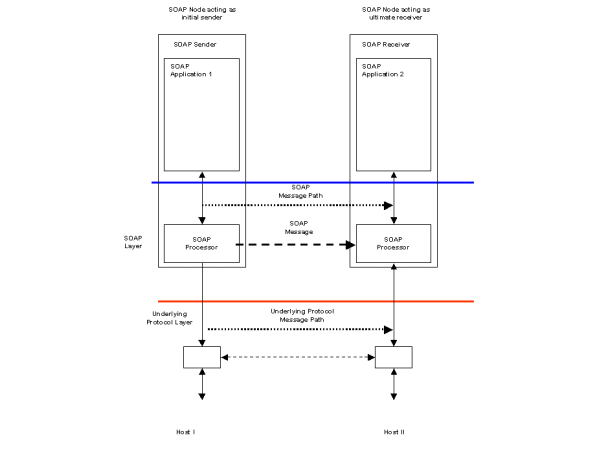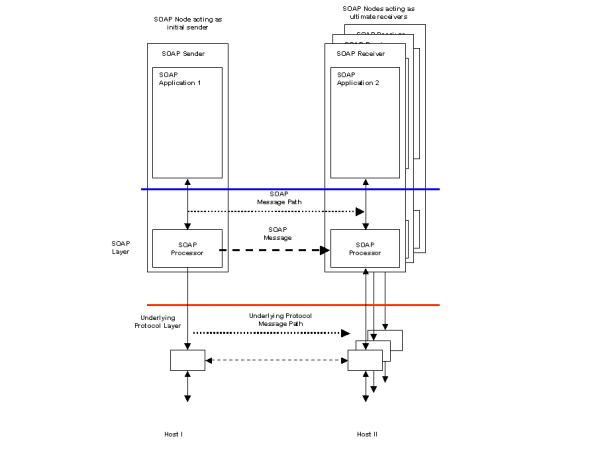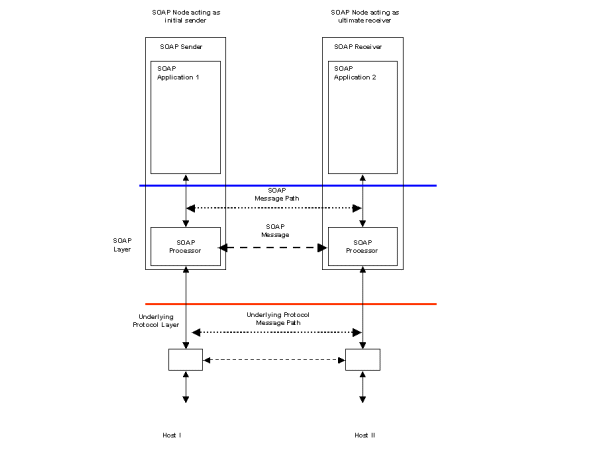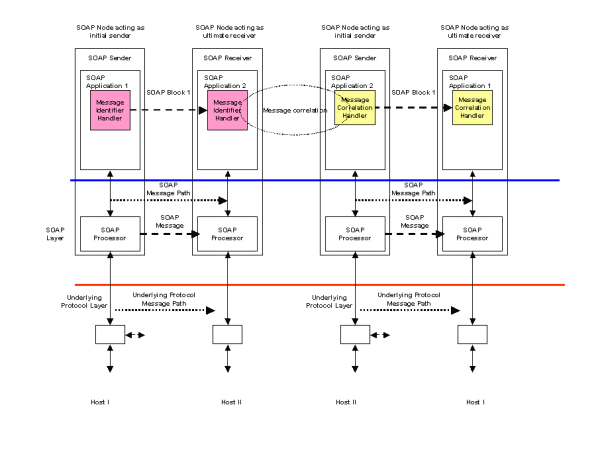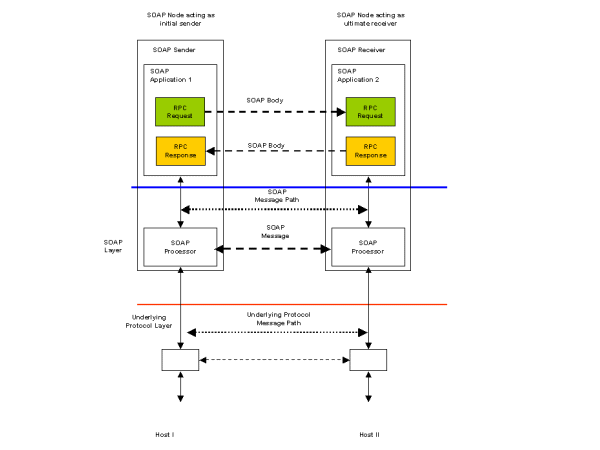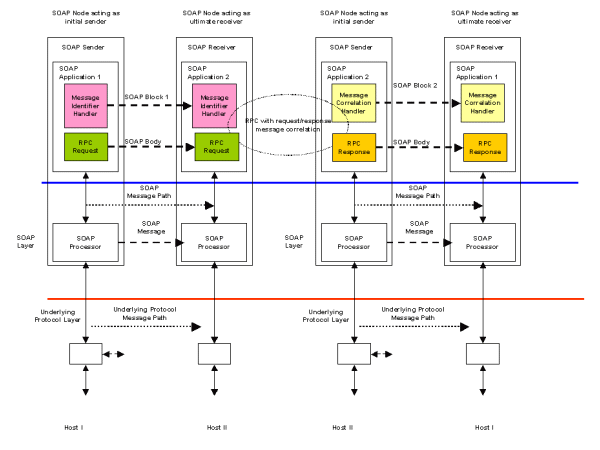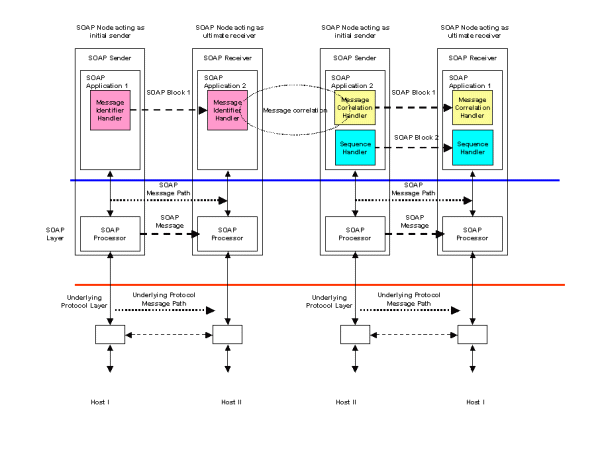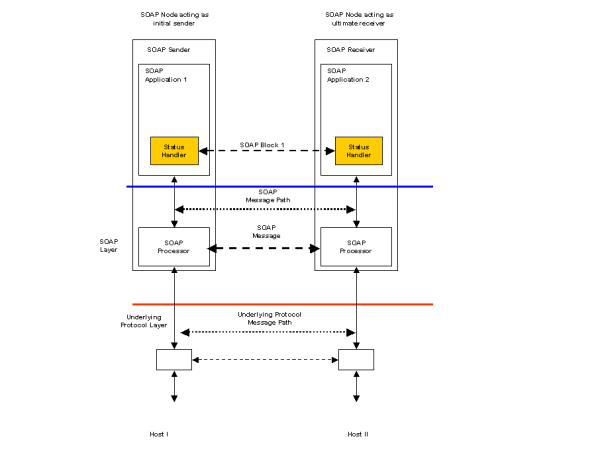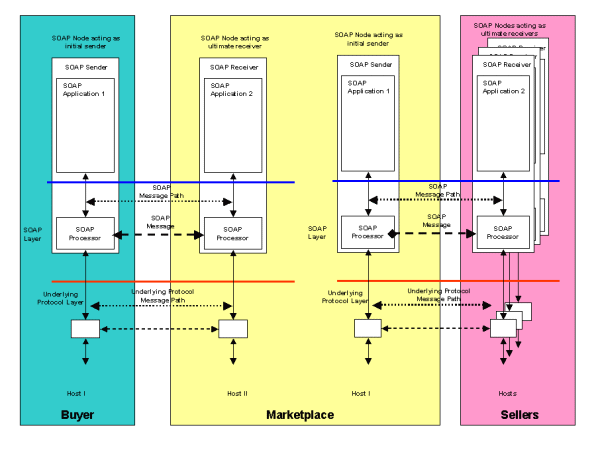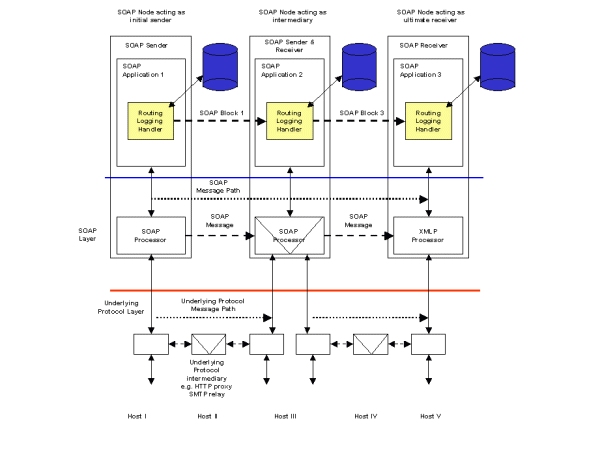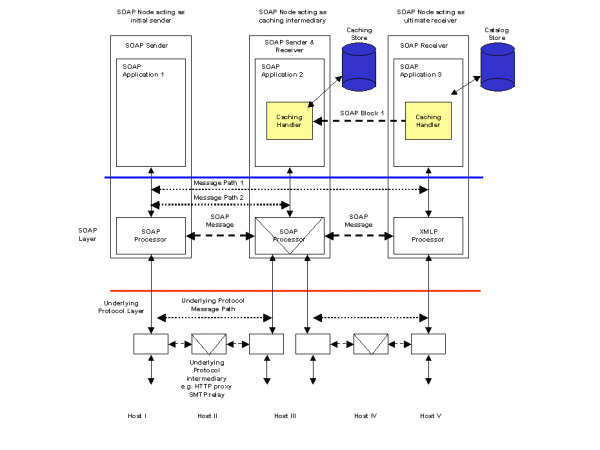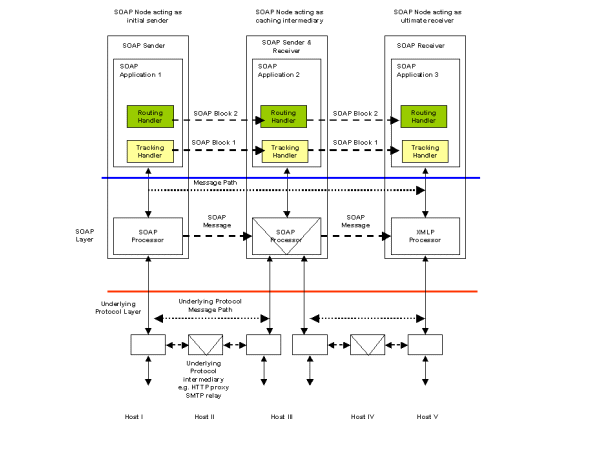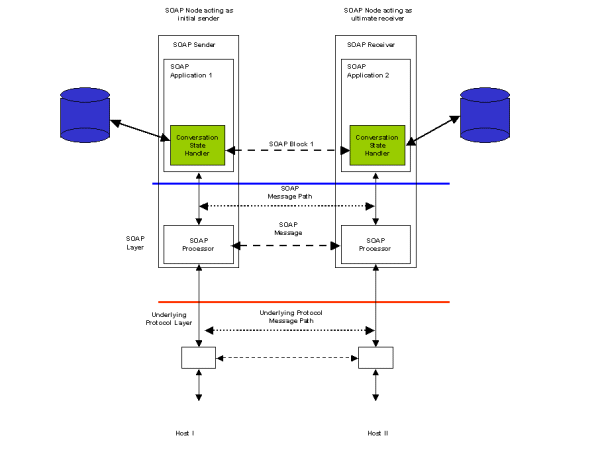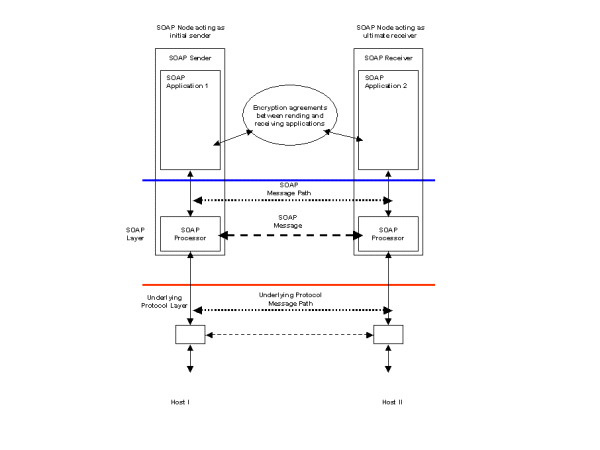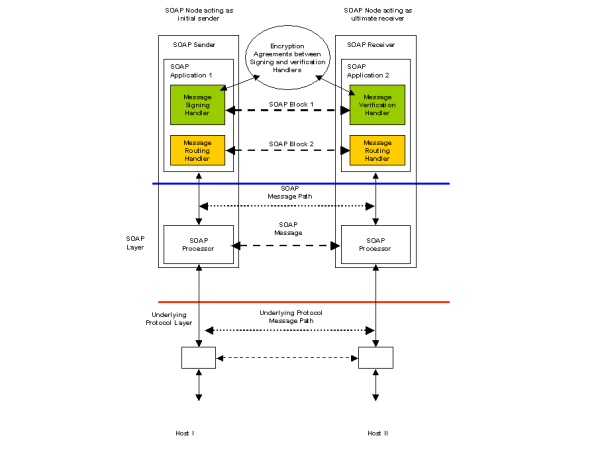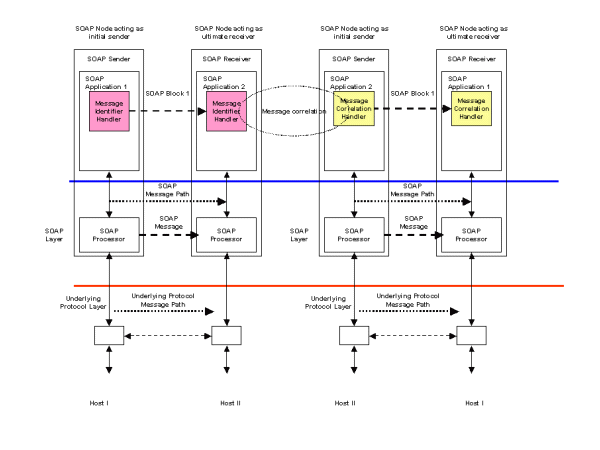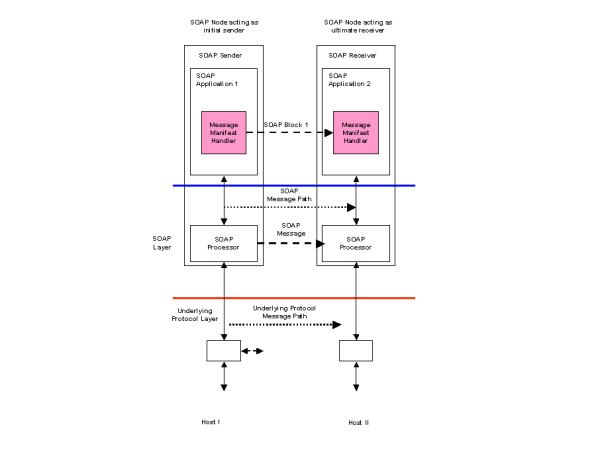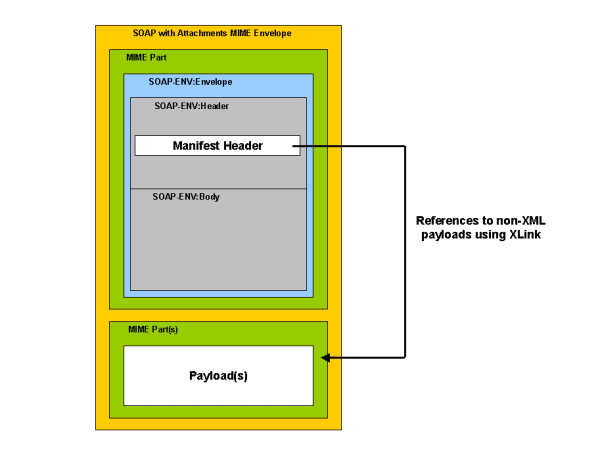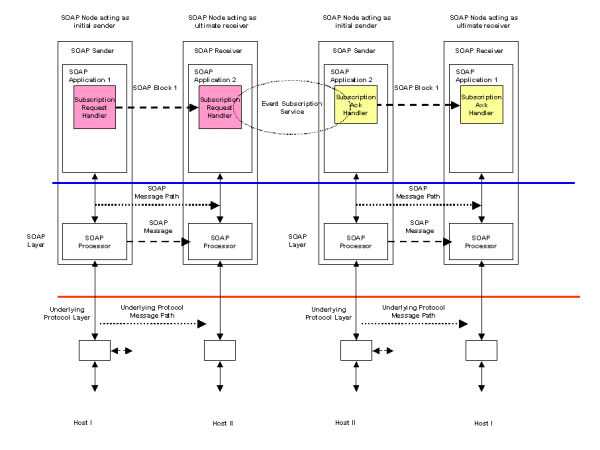2.34.1 Scenario Definition
A SOAP sender (not necessarily the initial SOAP sender) wants the SOAP
message to be handled with specific quality of service as it traverses the
SOAP message path to include multiple SOAP Processing intermediaries.
Information in the SOAP message is used to select appropriate QoS mechanisms
(e.g., RSVP, Diffserv, MPLS, etc.). Selection of QoS may be constrained by
QoS policies, Service Level Agreements (SLAs), Service Level Specifications
(SLS).
2.34.2 Description
A SOAP header block is one possible approach to implementing this
scenario. The SOAP 1.2 specification does not define this hypothetical SOAP
Quality Of Service (QoS) block. An initial SOAP sender sends a SOAP message
containing a QoS header block through one or more SOAP intermediaries to an
ultimate SOAP receiver. The intermediary is targeted by the initial SOAP
sender from within the SOAP message by inserting a role attribute within the
QoS Block to be used at the SOAP intermediary as described in the SOAP
processing model (Part 1, section 2.5). The SOAP specifications do not state
how the role attribute is to be used by the SOAP sender. Potentially, it can
be used in the context of the SOAP binding framework to provide a hint for
message routing. However, message routing is not within the scope of the SOAP
1.2 specifications. The SOAP intermediary must examine the SOAP QoS Block,
and determine how to invoke the QoS capabilities exposed via the SOAP
binding. If the SOAP QoS Block is marked mustUnderstand, then the
intermediary is expected to be QoS-aware. If it is not QoS-aware, then a SOAP
fault is generated, as this mandatory header cannot be processed. If it is
QoS-aware, but cannot honor the specific QoS parameters carried in the QoS
Block, then any fault or other response to the sender or elsewhere (e.g., log
file) is not defined in the SOAP specifications. The specification of the QoS
extension, when defined, would need to describe error handling, negotiations,
or other processing under all circumstances.
If the intermediary is QoS-aware, then presumably the information in the
QoS Block is used when forwarding the SOAP message further along on its
message path toward the ultimate SOAP receiver. In addition to the use of
SOAP Blocks to extend the functionality of SOAP, this scenario may also
require extensions to the HTTP binding, or a completely new binding. The
Binding Framework allows for additional properties, outside the SOAP
envelope, that may be required to invoke the lower layer QoS mechanisms.
Additional properties (within the Binding Framework) may be required. For
sake of discussion, lets assume that the SOAP node will send the SOAP message
using HTTP, but traffic classification of this HTTP flow would be done using
diffserv so particular per-hop behaviors can be used within the network
en-route to the next SOAP node. Traffic classification for diffserv can be
done by the SOAP node sending the SOAP message, or by network devices
(assuming they know how to recognize the particular HTTP flow). If traffic
classification is handled by a network device, perhaps communications would
be needed between the SOAP node and the network device, for example, to
provide the network device with the TCP/IP port numbers and IP addresses of
the HTTP connection. This would presume some way to obtain this port and
address information, which probably involves an API or properties that are
beyond the scope of the SOAP 1.2 specifications.
For example, to state that a separate spec can define properties in
accordance with the binding framework to extend the capability of the HTTP
binding (or any other binding). In the case of SOAP RPC, a QoS extension at
the ultimate SOAP receiver may attempt to insert a QoS Block in RPC response.
The RPC response may succeed, but perhaps the desired QoS cannot be delivered
on the return message path. It is not clear if a SOAP fault should be
generated. Likewise, if a SOAP Intermediary on the return message path cannot
honor the QoS Block (assumed to be marked mustUnderstand), is it permissible
to convert the SOAP RPC response to a SOAP fault? A SOAP extension in the
initial SOAP sender is needed to insert this SOAP QoS Block. The sender may
need to use properties as defined by the SOAP binding framework to
communicate QoS parameters to be used by the underlying network. Since a SOAP
binding must define the rules for how the data is exchanged using the
underlying protocol, a custom or supplemental binding may be required to
support this QoS usage scenario. The HTTP binding described in the SOAP 1.2
specification does not explicitly support QoS properties. The SOAP 1.2
specification does not preclude extensions to this HTTP binding, which would
provide the capability to define either QoS properties or a requirement to
examine the SOAP envelope (i.e., SOAP QoS Block) to determine the QoS used
for transmission. Alternatively, a completely new binding can be specified
that includes QoS explicitly, rather than as an extension to an existing
binding
